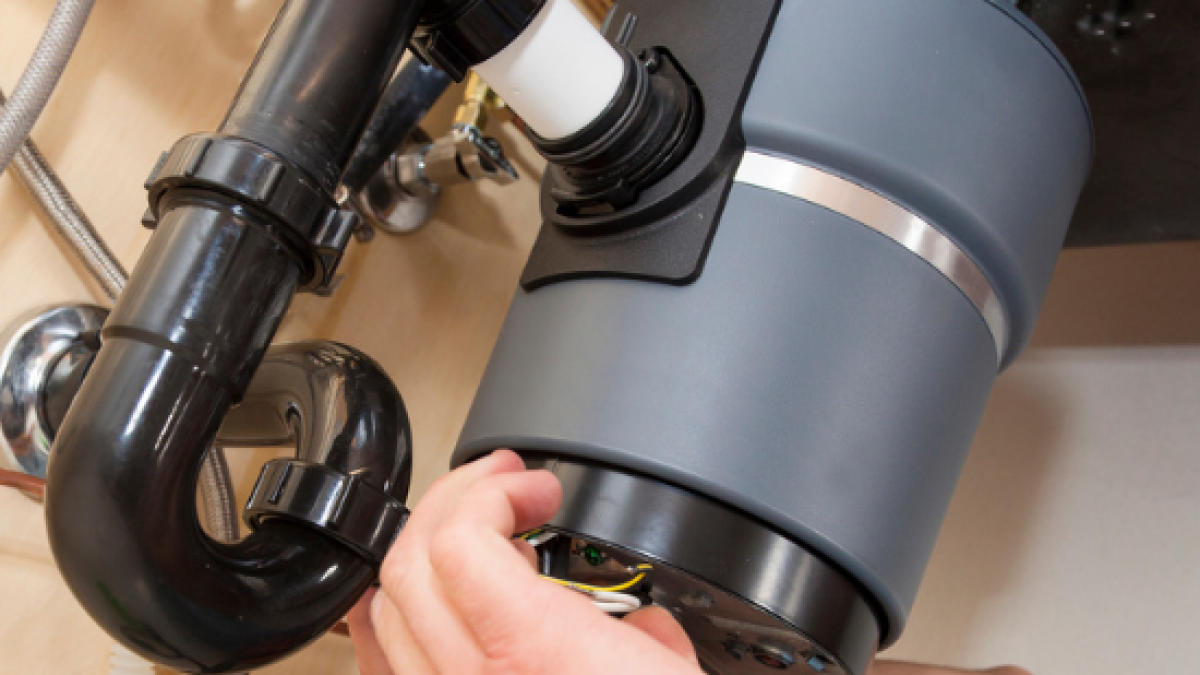The article down below involving Tips on Fixing a Leaking Garbage Disposal is extremely fascinating. Check it out for yourself and decide what you think about it.

Garbage disposals are essential kitchen devices that assist in disposing of food waste successfully. However, a dripping waste disposal unit can be an aggravating and untidy trouble to handle. The good news is, numerous leakages can be fixed quickly with a couple of straightforward steps. In this short article, we will review how to repair a leaking waste disposal unit properly.
Intro
Waste disposal unit are mounted under cooking area sinks and are made to shred food waste into smaller items, permitting it to travel through the pipes system quickly. While these tools are generally reputable, leaks can occur with time due to wear and tear, loosened links, or damages to the device.
Usual Sources Of Leakages in Rubbish Disposals
Worn Seals and Gaskets
Seals and gaskets play a vital function in stopping water from leaking out of the garbage disposal. With time, these parts can degrade, bring about leaks around the disposal unit.
Loose Connections
The connections in between the waste disposal unit and the pipes system can become loosened with time, causing water to leakage out throughout procedure.
Splits or Openings in the Disposal Device
Physical damage to the waste disposal unit, such as fractures or openings in the housing, can likewise lead to leaks.
Identifying the Resource of the Leak
Prior to trying to fix a dripping garbage disposal, it is necessary to recognize the resource of the leakage. This can generally be done through aesthetic examination or by performing simple examinations.
Visual Examination
Examine the garbage disposal device meticulously for any signs of water leak. Pay close attention to locations around seals, gaskets, and link factors.
Checking for Leakages
One way to test for leaks is by running water via the disposal system and looking for any kind of noticeable indications of leakage.
Tools and Materials Needed for Taking Care Of a Dripping Waste Disposal Unit
Before beginning the repair service procedure, gather the needed tools and products, including a screwdriver, flexible wrench, plumbing's putty, replacement seals or gaskets, and epoxy or patching material for repairing splits or openings.
Step-by-Step Overview to Dealing With a Dripping Garbage Disposal
Turn Off the Power
Before attempting any type of repair services, make certain that the power to the waste disposal unit system is switched off to stop the risk of electric shock.
Find the Leak
Determine the precise location of the leakage and figure out the cause.
Tighten up Links
Use a wrench to tighten any kind of loosened connections between the disposal unit and the pipes system.
Change Seals or Gaskets
If the leak is due to worn seals or gaskets, get rid of the old components and replace them with new ones.
Patching Cracks or Openings
For cracks or openings in the disposal unit, use epoxy or a suitable patching product to seal the broken location.
Testing the Garbage Disposal After Repair Service
When the repair service is total, examine the garbage disposal by running water via it to guarantee that the leak has been solved.
Preventive Upkeep Tips to Stay Clear Of Future Leakages
To stop future leaks, it is essential to carry out routine upkeep on your waste disposal unit. This includes maintaining it tidy, avoiding putting non-food things or difficult items down the disposal, and periodically checking for leakages or various other concerns.
Final thought
In conclusion, dealing with a leaking waste disposal unit is a relatively simple procedure that can be completed with fundamental tools and materials. By following the steps described in this article and exercising preventative upkeep, you can keep your waste disposal unit in good working problem and avoid expensive repairs in the future.
What to Do About a Leaking Garbage Disposal
A leaking garbage disposal often goes unnoticed until you confront a sopping cabinet, a foul-smelling puddle, or an audible drip-drip-drip from the unit. The fix can be frustrating, too, because the leak can stem from a number of components in the system. Fortunately, with a little sleuthing, you can zero in on the leak and—depending on the exact location—stop the icky oozing and repair the component that caused it. Worst case scenario, if it turns out that the garbage disposal must be replaced, installing a new one is a reasonable do-it-yourself task for those with basic plumbing skills. Read on to keep the cash you’d otherwise hand over to a pro.
Prepare to find the leak
Prior to testing the garbage disposal for leaks, unplug it at the wall outlet and turn off the power from the breaker box to prevent electrical shock. Then insert a watertight sink stopper into your sink drain and wipe the unit dry with a clean cloth. In any handy container, mix a few drops of food coloring into a few cups of water, and pour the dyed water onto the sink stopper to help you locate the leak.
Investigate the source
the top, where the disposal meets the sink drain the side, where the dishwasher hose or main drain pipe connects to the disposal or the bottom of the unit Inspect each of these locations while gliding a light-colored rag over the unit; the dyed water will readily show on the rag and reveal the location of the leak. If a leak isn’t immediately apparent, remove the sink stopper and pour a few more cups of dyed water down the sink drain, then check for leaks again. Leaks near the top of the unit are more likely to show themselves while the sink is plugged, while side and bottom leaks are more noticeable while the sink is unplugged.
The metal sink flange that sits directly inside the sink drain is typically sealed around the top with plumber’s putty (a clay-like sealant) and then secured from under the sink with bolts. If the plumber’s putty deteriorates, or the bolts loosen, the flange can no longer form a watertight seal between the sink drain and the disposal—which could cause a leak at the top of the unit.
To reseal the leaky flange, you must first detach the garbage disposal. Start by loosening the screws securing the main drain pipe to the disposal, then loosen the screws in the metal clamp securing the dishwasher hose to the disposal and detach the drain pipe and dishwasher hose from the disposal. Loosen the screws in the mounting ring that connects the disposal to the metal mounting assembly beneath the sink, then pull down the disposal and carefully set it on a clean, dry surface. Loosen the bolts in the mounting assembly with a wrench, then pull down the mounting assembly and set it near the disposal.

As an enthusiastic reader on Why Is My Garbage Disposal Leaking From the Bottom?, I figured sharing that piece of content was valuable. Liked our article? Please share it. Let someone else find it. Thanks for your time spent reading it.
Call Today
 Brandy Then & Now!
Brandy Then & Now! Joshua Jackson Then & Now!
Joshua Jackson Then & Now! Kelly Le Brock Then & Now!
Kelly Le Brock Then & Now! Kane Then & Now!
Kane Then & Now! Meadow Walker Then & Now!
Meadow Walker Then & Now!